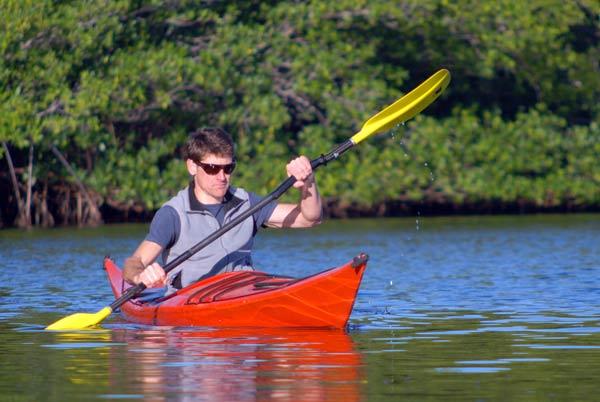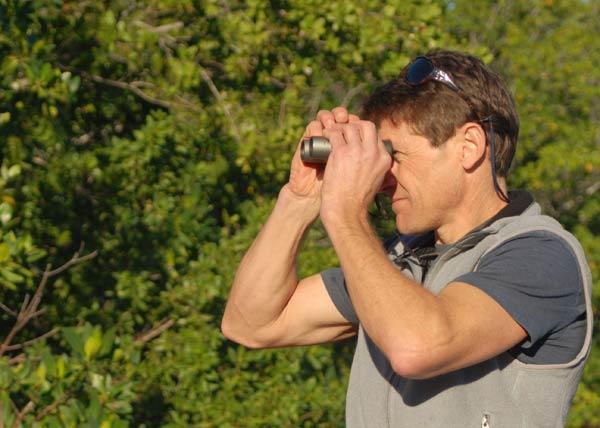He Would Walk 500 Miles: Conservation Odyssey Begins


Look up directions from Key Largo, Fla., to the Gaspé Peninsula in Quebec, and Google maps will warn you. This route has tolls.
Tolls are one thing John Davis won't have to worry about on his journey from the southern Florida island to Canada. Where he's going, they don't have tolls. Or roads, really.
Beginning this week, the wilderness explorer and conservationist is swimming, walking, biking, boating and sometimes running from the southern tip of the United States to Canada's northeastern coast.
The 10-month journey will send him zigzagging across the eastern United States, trekking the country's remaining wild lands, from the Atlantic Ocean, as far west as Birmingham, Ala., and Lexington, Ky.
"It's partly a physical adventure, it's partly the fun of seeing these places and getting through them on my own power, but it is a conservation mission," Davis told OurAmazingPlanet. "It is a journey in which I intend to help raise awareness about these wild places, and the need to connect them, and most important, the need for action."
Sponsored largely by Wildlands Network, a conservation group Davis co-founded, Davis said one major focus of the trip will be meeting with people in communities along the way to promote local conservation efforts .
Following tradition
Get the world’s most fascinating discoveries delivered straight to your inbox.
Brian McPeek, North America director for The Nature Conservancy, said there is a long tradition of using such wilderness treks to promote action, both locally and nationally. "Just think of that famous picture of John Muir standing with Teddy Roosevelt in Yosemite ," McPeek said.
However, McPeek said, the trip also incorporates the changing ethos of 21st century conservation, which aims to pitch a bigger tent. These days, industry, agriculture and urban dwellers are all invited to help out.
"In the 20th century, conservation was more about protecting land from people, fencing them off," McPeek said. "Now we're thinking much more about how nature and people can live in harmony , and about good stewardship of natural areas, which can be your backyard or a national park."
Davis agreed.
"Locally, there's a whole range of actions that would be beneficial," Davis said. "Picking up litter that could be swallowed by sea turtles, farming sustainably if you're a farmer; if you're a logger, doing it sustainably."
Heading north
Davis sets off from Key Largo this week, snorkeling over a coral reef and kayaking north on the first leg of his journey.
For the next 10 months he will travel by kayak, canoe, rowboat, perhaps a sailboat, a bicycle, skis and his own two feet.
Davis said he will camp five or six nights a week, sleeping in a tent, hunkering down when the weather gets bad, cooking simple meals of lentils and rice on a cook-stove or campfire, and making sure he gets plenty of protein.
"It's very important that you eat a lot on journeys like this 5,000 calories a day otherwise you end up just eating into muscle tissue," Davis said.
Although a seasoned triathlete, the 47-year-old explorer will face daunting foes on his 4,500-mile (7,240-kilometer) transcontinental adventure physical exhaustion, isolation, rogue drivers (he'll be forced to ride his bicycle on busy roads sometimes), the occasional thunderstorm, ticks, and, most dreaded of all, Facebook.
Davis said that in prepping for the journey, the technological challenges have far outweighed the physical. He is bringing an iPhone , will have occasional access to a laptop, and will use social media throughout his travels to deliver updates and stay connected.
"I'm very primitive in my understanding of technology, and I'm needing to learn how to use Facebook, Twitter and how to write a blog," Davis said.
When asked if Facebook might prove addictive on lonely nights with just a campfire and a tent for company, Davis quietly laughed.
"That would be something," he said. "I think my friends would be quite shocked if that happened."
Davis set out on Thursday (Feb. 3) and said he hopes to be back home in upstate New York by late November.
- In Images: Extreme Adventures
- All Yours: 10 Least Visited National Parks
- Polar Vacation: Tourism with a Conservation Twist
Reach Andrea Mustain at amustain@techmedianetwork.com. Follow her on Twitter @AndreaMustain.




